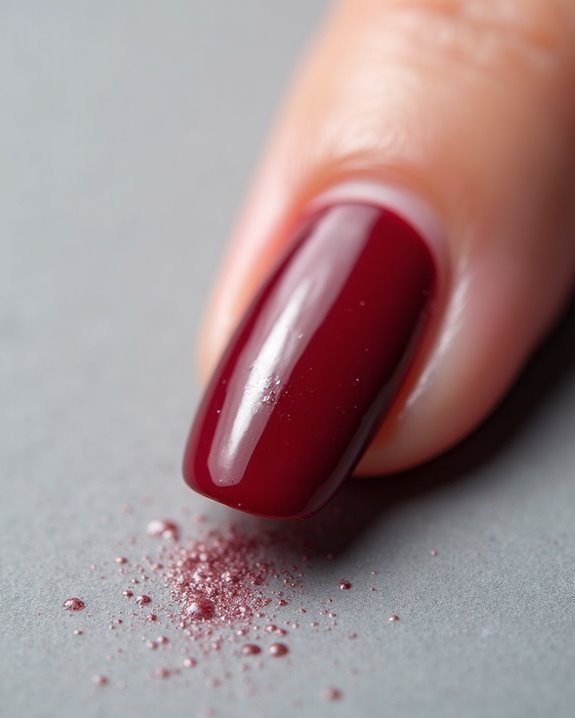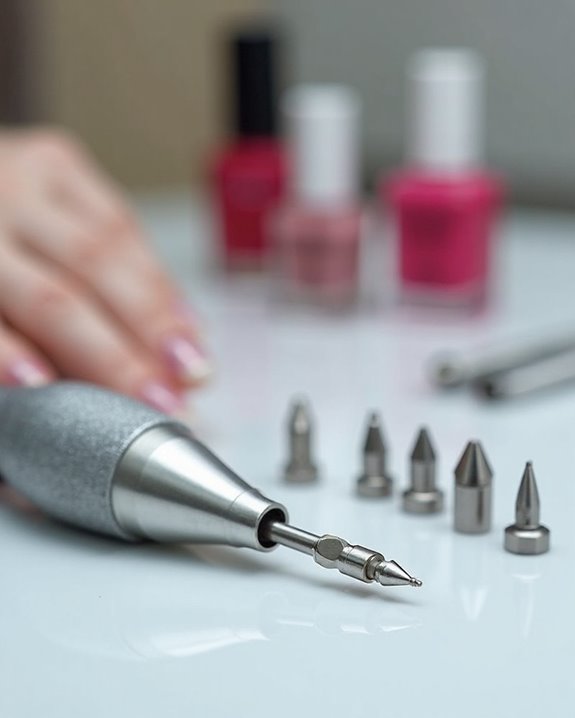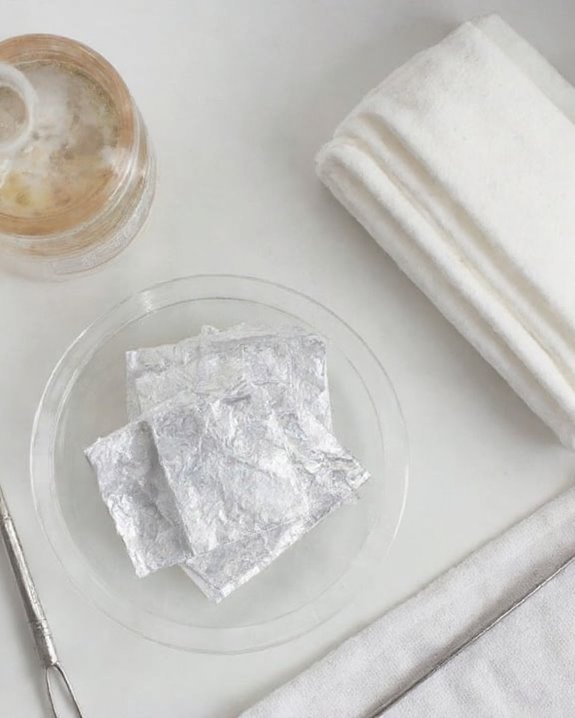Nail polish is fully dry when it no longer feels tacky and doesn’t smudge when touched, typically taking 1-2 hours for complete curing. Regular polishes require longer drying times than quick-dry formulas, which may set in 30-60 minutes. Surface dryness occurs within 20 minutes, but full hardening needs more time. Thin application layers, cool temperatures, and specialized drying products can greatly reduce waiting time. Understanding proper drying techniques guarantees a flawless, long-lasting manicure.
Key Takeaways
- Regular nail polish is fully dry after 1-2 hours, though surface dryness occurs within 20 minutes.
- Nail polish is completely dry when nails don’t stick together and there’s no smudging under gentle pressure.
- Quick-dry formulas reduce drying time to 30-60 minutes, while gel polish cures in 1-2 minutes under UV/LED lamps.
- Thin layers applied with 2-minute pauses between coats dry significantly faster than thick applications.
- Cool temperatures and proper air circulation can accelerate drying, while humidity slows the process.
The Science Behind Nail Polish Drying
The process of nail polish drying represents a complex chemical reaction that occurs once the polish makes contact with air. When applied to nails, the solvents in the formula begin to evaporate, transforming the liquid polish into a solid finish. Standard nail polish drying time typically ranges from 1-2 hours for complete hardening, though this varies based on several factors. Dark-colored polishes take longer to dry due to their higher pigment content, which increases viscosity and slows the drying process. Environmental conditions greatly impact drying times—cooler temperatures can actually speed up the drying by enhancing solvent evaporation, which explains why some recommend using ice water for faster results. Additionally, thinner layers dry faster than thick applications because the solvents can evaporate more efficiently across the increased surface area.
Average Drying Times for Different Polish Types

Understanding the drying times for different nail polish types helps consumers make informed choices based on their specific needs and time constraints. Regular nail polish typically takes 1 to 2 hours to become fully dry, though the surface may feel dry to the touch within 10-15 minutes. For those seeking faster results, quick-dry formulas generally reduce this time to 30-60 minutes through specialized fast-drying ingredients.
Specialized products like Sally Hansen Insta-Dri can achieve dryness in as little as 60 seconds, utilizing combined base and top coat technology. However, formaldehyde-free options may require extended drying periods of 2+ hours compared to standard formulations. Gel nails represent the fastest option, with each coat taking only 1-2 minutes to cure under UV or LED lamps, making them ideal for consumers with limited time who require multiple coats. For optimal maintenance of gel nails, professionals often recommend using adjustable speed drills to ensure precise shaping and removal.
Signs Your Nail Polish Is Completely Dry

Determining when nail polish has fully dried can prevent frustrating smudges, smears, and imprints that ruin a fresh manicure. While polish may feel dry to the touch after approximately 20 minutes, underlying layers often remain wet, requiring additional time to dry completely.
Several reliable methods exist to verify when nail polish is completely dry. Gently tapping nails against each other indicates dryness if they do not stick together, a technique recommended by expert Molly Romah. Users should wait at least one full hour after application, as standard nail polish typically requires 45-60 minutes to set properly. Additionally, lightly touching the nail surface can reveal if any tackiness remains, while applying gentle pressure can confirm dryness if no smudging occurs. For ideal results, allowing up to two hours guarantees that nails feel thoroughly dry throughout all polish layers.
Factors That Affect Nail Polish Drying Time
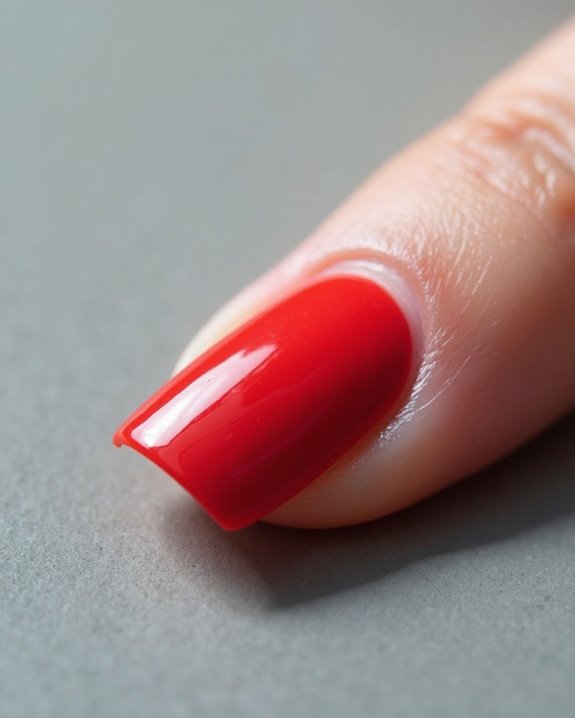
While accurately identifying a fully dried manicure prevents frustrating mishaps, several key factors influence how long this process actually takes. The number of coats of nail polish applied greatly impacts drying time, with thin layers drying faster than thicker applications; professionals recommend even coats for best results. A base coat typically dries within minutes, while subsequent layers require up to 20 minutes each, and top coats add additional time.
Environmental conditions play a vital role, as cooler temperatures help nail polish dry faster, while humidity substantially slows the process. Water exposure should be avoided during drying. Polish formulation matters greatly—darker colors need extended drying periods due to pigment density, while specially formulated products like quick dry oil or drying drops can accelerate completion time. Formaldehyde-free options may require additional patience compared to traditional formulas.
Quick-Dry Methods That Actually Work
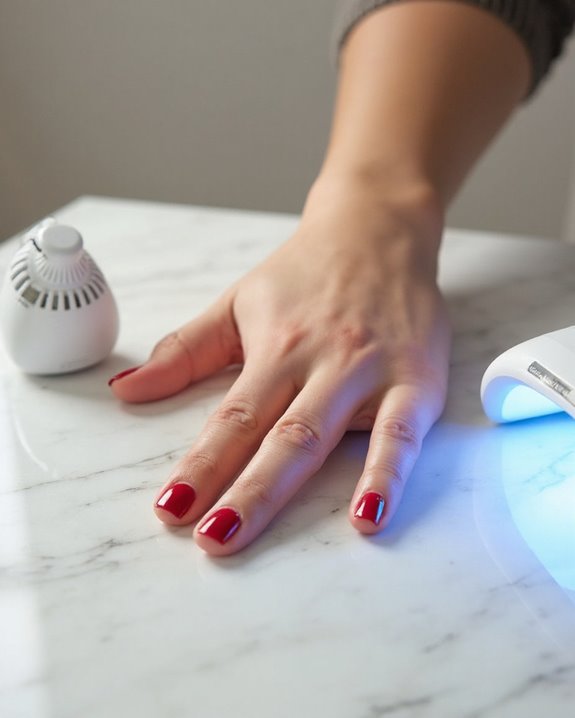
The frustration of smudged or dented nail polish can be avoided through several effective quick-dry techniques that substantially reduce waiting time between application and daily activities. Applying specialized quick-dry drops, such as ORLY Dry Drops, can cut drying time in half, making nails touch-dry in five minutes after application for best results.
Using a hair dryer on cool setting or a small hand fan helps speed up the process by circulating air around the nails, reducing drying time to 10-15 minutes. For maximum efficiency, experts recommend applying thin layers with two-minute pauses between coats, which allows partial setting before adding subsequent layers. A quality quick-dry top coat like Seche Vite provides dual benefits: it helps speed drying time to approximately 30 minutes while adding chip resistance to extend manicure longevity.
Common Mistakes That Delay Drying
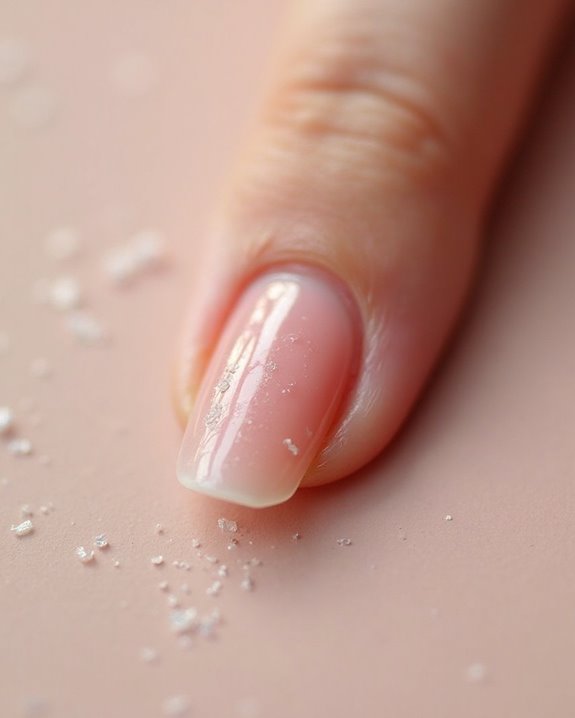
Despite knowing effective quick-dry methods, many nail enthusiasts unknowingly sabotage their manicures through habits that greatly extend drying time. Applying thick coats of polish instead of thin, even layers greatly increases the amount of polish that must cure, causing nails to take longer to dry—often extending beyond the standard 1-2 hours. Skipping the recommended two-minute wait between each coat prevents proper setting, forcing the entire application to take more time overall.
Using old, thickened formulas without free-moving beads can extend drying from 45 minutes to waiting an hour or more. Experts like Kelly Bannon recommend limiting applications to three thin coats rather than multiple thick ones, which can add up to two hours to dry your nails. Additionally, humid environments substantially delay the process beyond the average 20-minute surface dry time.
Professional Tips for Faster Drying Results

Nail technicians with years of experience have developed specialized techniques that greatly reduce polish drying time, helping clients achieve long-lasting manicures without the extended wait. Instead of allowing two hours for complete drying, professionals recommend applying three thin coats with two minutes between applications, which can shorten the process to 45 minutes. The tips to make nail polish dry faster include using a Drying Top coat, which forms a protective top layer that sets in under 10 minutes, effectively cutting drying time in half. Additionally, experts suggest using cool air from a fan to expedite drying, potentially reducing how long does it take for nail polish to fully set from 60 minutes to approximately 30 minutes. Make Your Nails dry quicker by avoiding thick applications, as thinner coats require only 5-10 minutes each.
The Truth About Cold Water and Other Drying Myths
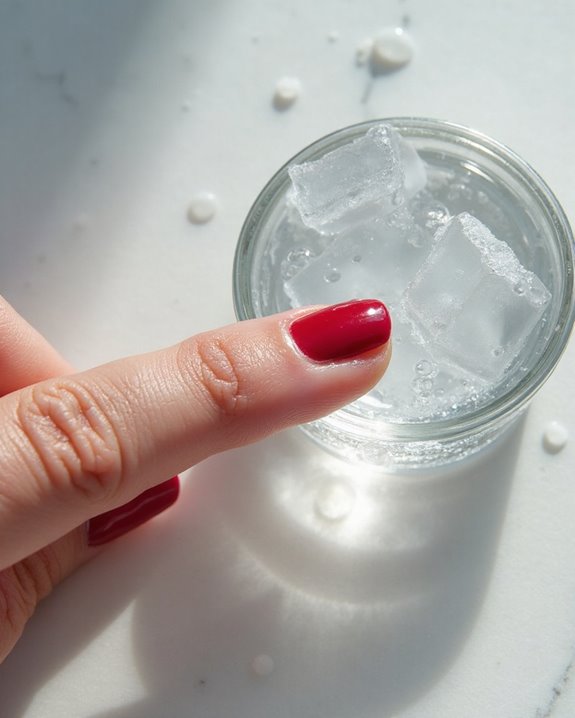
Why do so many manicure enthusiasts continue believing in quick-fix solutions that simply don’t work? The persistent myth that submerging nails under cold water accelerates drying time is particularly misleading. Cold water only hardens the top layer of polish while leaving underlying layers vulnerable to damage, despite claims that it takes nail polish only 4-5 minutes to set this way.
In reality, complete drying typically requires 45 minutes to an hour, regardless of temperature exposure. Professional nail artists like Mimi D caution against these shortcuts, noting that movement while polish is partially dry can ruin an entire manicure. For those seeking to reduce how long does nail polish need to dry enough for daily activities, better alternatives exist. Quick-dry top coats actually help create a protective barrier while facilitating proper drying, and using a fan provides gentle air circulation without the risks associated with water immersion.
How to Care for Nails While Waiting for Polish to Dry
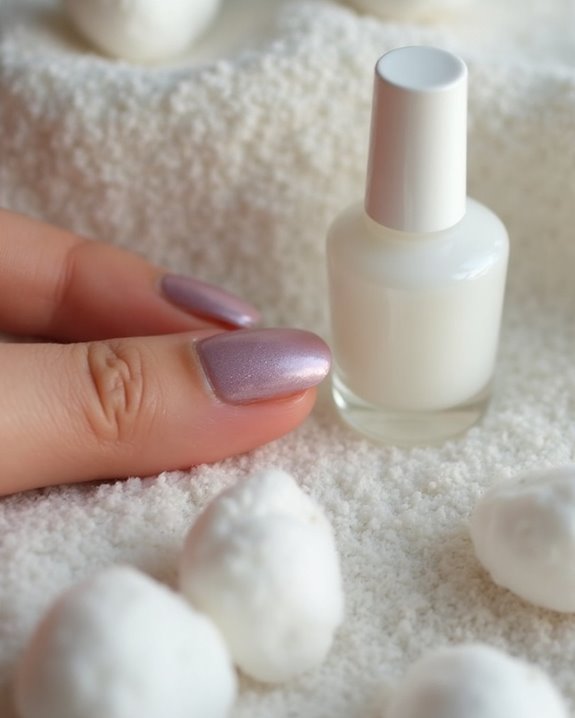
While the polish dries on freshly painted nails, proper care becomes essential to guarantee a flawless finish and maintain nail health. Experts recommend applying cuticle oil, such as QD.01, two to three times during the drying period to prevent brittleness and promote a Long-Lasting Nail polish result. The time nail polish is completely dry depends on formula and application thickness, typically requiring one hour for full curing.
To take care after painting your nails, avoid water exposure for at least 20 minutes, as moisture disrupts the drying process. Using quick-dry products not only accelerates drying but also nourishes the nail bed. Wearing gloves during this waiting period protects your nails from environmental damage, while incorporating a hydration routine with cuticle balm guarantees enough time for polish to set properly.
Additionally, for enhanced cuticle maintenance, professional nail techs often rely on tungsten carbide bits to ensure precise and durable nail care.
Frequently Asked Questions
How Long Does It Take for Nail Polish to Fully Dry?
Like a delicate butterfly emerging, nail polish typically takes 1-2 hours to fully dry. Drying factors vary with polish brands, environmental effects, coat thickness, application methods, temperature impact, humidity influence, layer counts, setting variations, and cure duration.
How Do You Know if Your Nail Polish Is Completely Dry?
To determine complete dryness, one can perform a gentle Touch Check or Smudge Test by tapping nails together. Visual Inspection for consistent Shine Indicator, Surface Feel assessment, and the Breath Method also signal nail polish has fully hardened.
How Long After Painting Nails Can I Shower?
Ideal shower timing requires at least one hour after nail painting for moisture protection. Water avoidance during this period minimizes shower risks. Bath precautions include delaying wet exposure until polish sets completely for proper nail hygiene.
How Long Does Nail Polish Dry Without UV?
Impatient nail enthusiasts watch their polish glacially solidify for 1-2 hours without UV. Environmental Factors like Humidity Effects slow drying, while Fan Techniques, Air Circulation, and Quick Dryers serve as Speed Boosters for Non-UV Alternative Polish Formulas.

